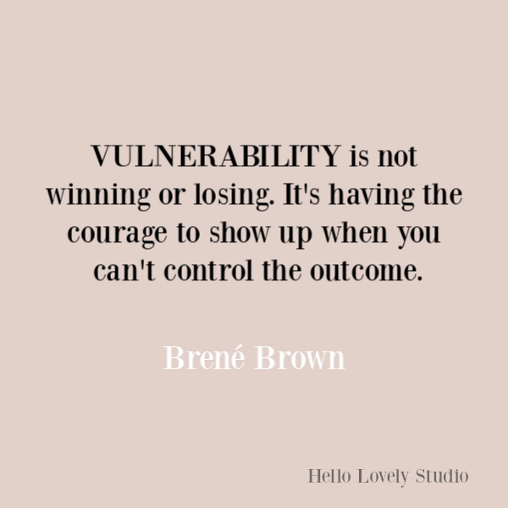Create a culture that means business™
Email address
How long does it take to build trust and vulnerability with your team? It doesn’t take long to build trust and vulnerability with your team if you make an effort, but the secret is continuing to work on it. When you know someone well and they’re vulnerable with you, honor that trust. Just because you know how to push someone else’s buttons, it doesn’t mean you need to look for opportunities to do it.
Trust and vulnerability are critical because without it, teams are unlikely to engage in unfiltered and passionate debates about key issues. A lack of trust and vulnerability creates two problems:
- Stifling conflict will actually increase the likelihood of damaging and negative conversations.
- Poor decision-making will happen because the team isn’t benefiting from the honest ideas and perspectives of its members.
 One of my favorite quotes about trust and vulnerability
One of my favorite quotes about trust and vulnerability
Getting started
Building trust and vulnerability with teams may not seem like a top-of-mind priority, but it’s extremely effective. If you’re unsure how to get started, consider a personal history or lifeline exercise. These types of informal exercises are great ways to get to know your team members better. Ask the following questions in a casual setting:
- Where did you grow up?
- How did you get to where you are today?
- What was a difficult challenge for you in life (both high and low points)?
Some people might feel like they didn’t have a difficult childhood or feel guilty that they don’t know how to deal with changes or challenges. It’s important to let each person share their authentic story.
Bonus tip: Here’s a template for a personal histories exercise from the Table Group.
Trust and vulnerability need to be allowed
Be open to talking about trust and vulnerability with your team and try to understand how these key characteristics can impact someone’s ability to have healthy relationships at work. This will help you improve your strategy and approach to relationship building in the workplace, and you’ll see positive outcomes as a result. Also, remember to have conversations in the moment — this allows you to resolve and take action in the moment to ensure the person feels heard and valued. Avoid saying phrases like, “We need to take this offline.” These types of responses can interrupt a potential breakthrough moment.

Get comfortable with being uncomfortable
It’s important as a team leader to hold people accountable. Although it’s easier to have these types of conversations about accountability with a team member privately, there are benefits to talking openly as a group. Holding people accountable in a group setting enables other team members to learn from someone else’s mistake or challenge and have open discussions. The other team member may think, “I just learned something because I do that too.” If you’re going to put someone on a performance plan, then that type of discussion should definitely be taken offline and held in private. However, there are some conversations that can be discussed as a team to help build trust and vulnerability with another. This might seem like a new concept, but leaders and employees should not be void of being uncomfortable. Your team will not come close to maximizing their potential without feeling a bit uncomfortable — sometimes it’s required to get out of our comfort zones to move forward in better directions.
Put your team first
You have to put your team first by working together and telling each other the truth without derailing the other person. A one-on-one conversation is good for coaching and career development. And remember, be careful to not take too many things offline.
Great leaders live by example and encourage employees to give feedback on a continuous basis, both privately and publicly. Receiving feedback gives managers an opportunity to grow as better leaders and model appreciation for the criticism. The best leaders will work on not offending others and not getting offended as well. They focus on building trust and vulnerability with their teams through active listening and feedback.
If you want to learn more about how to engage your team members with trust and vulnerability, check out the recording of my recent virtual event. During my live virtual event, I discussed ways to utilize emotional intelligence tools and shared best practices to build a trusting and engaging team.
To learn more about how to increase engagement through trust, access Achievers’ white paper, “Empowerment and Trust: The Keys to Employee Engagement.”


